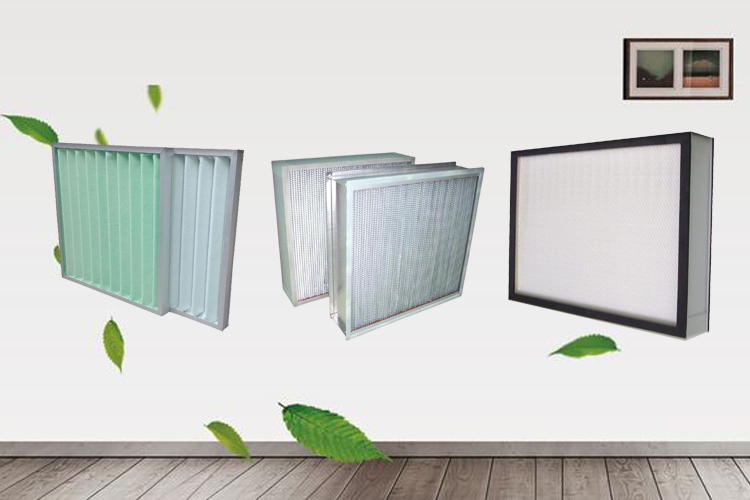High-efficiency filter leakage detection is one of the clean workshop inspection items First, GMP has received more and more attention since its implementation in 2010GMP. Now it has become a must-select item for pharmaceutical companies. More and more units in hospitals, electronics, food, cosmetics and other industries carry out high-efficiency filter leak detection. The following is a detailed introduction to the leak detection method of high-efficiency filters.

1. Sodium flame method
Sodium flame method test dust source It is polydispersed phase sodium chloride salt spray, and the “amount“ is Brightness of hydrogen flame during salt spray combustion.
The salt water splashes under the agitation of compressed air, and forms tiny salt crystal particles after drying. These particles enter the air duct and are sampled before and after the filter. Salt mist makes the hydrogen flame turn blue and increase its brightness. The brightness of the flame can be used to judge the concentration of salt spray in the air, and then determine the filtering efficiency of the filter against salt spray. The main detection instrument is a flame photometer, which can only detect sponges with low sensitivity and cannot detect ultra-high efficiency filters.
2. Oil mist method
The test dust source of the oil mist method is oil mist, and the “amount” is the turbidity of the air containing oil mist. The filtration efficiency of oil mist particles is judged by the difference in turbidity of air samples before and after filtration. Germany uses paraffin oil, and the particle size of the oil mist is0.3~0.5micron. When using the oil mist method to detect the filter, it is easy to damage the filter and the value cannot be read directly, which is a waste of time.
3. DOP法
This method was once tested internationallyHigh efficiency filterA common method for sponge use.
Its test dust source is 0.3micron monodisperse dioctyl phthalate(DOP)DOPDOP“, and “amount” means containing >DOPThe turbidity of the air. Heating DOP liquid into steam, the steam condenses into tiny droplets under specific conditions, and the droplets that are too large or too small are removed , leaving about 0.30.3micron particles into the air duct, measuring the turbidity of the gas samples before and after the filter, and judging the filter Filtration efficiency for0.3micron dust.
4. Fluorescence method
The test dust source of the fluorescence method is fluorescein sodium dust produced by the sprayer.
The test method is to take samples before and after the filter sponge, then dissolve the sodium fluorescein on the filter paper with water, and then measure the fluorescence brightness of the aqueous solution containing sodium fluorescein under specific conditions. The brightness reflects the weight of the dust, thereby calculating the filtration efficiency of the filter. .
5. Particle Counting Method
This method is widely used in Europe, and the testing method of ultra-high-efficiency air filters in the United States is similar. It is currently the mainstream sponge testing method in the world. The dust source is polydisperse liquid droplets or solid dust with defined particle size. Sometimes, filter manufacturers use atmospheric dust or other specific dust based on the special requirements of users. If a condensation core counter is used in the test, a single dispersed phase test dust source of known particle size must be used.��The main measuring instruments are high-flow laser particle counters or condensation nuclei counters.
Scan the entire outlet surface of the filter with a counter. The counter gives the amount of dust at each point and also allows comparison of the local efficiency of each point.
Title of this article: Leak detection method of high-efficiency filter
Source of this article: http://www .wellgo.com.cn/newb/information_2367.shtml


